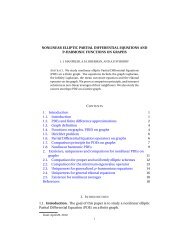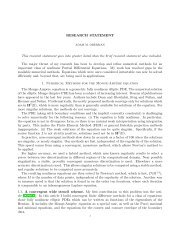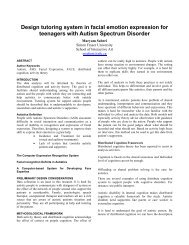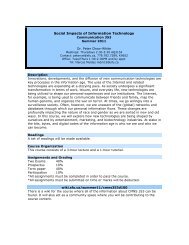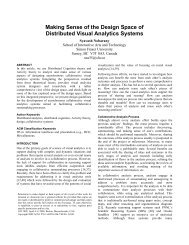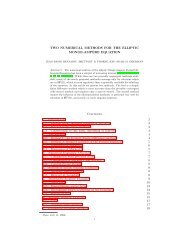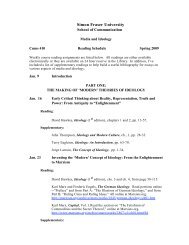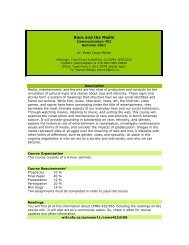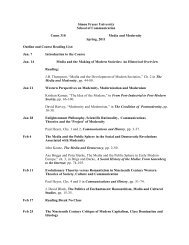Boyd Convex Optimization book - SFU Wiki
Boyd Convex Optimization book - SFU Wiki
Boyd Convex Optimization book - SFU Wiki
Create successful ePaper yourself
Turn your PDF publications into a flip-book with our unique Google optimized e-Paper software.
318 6 Approximation and fitting<br />
6.4 Robust approximation<br />
6.4.1 Stochastic robust approximation<br />
We consider an approximation problem with basic objective ‖Ax−b‖, but also wish<br />
to take into account some uncertainty or possible variation in the data matrix A.<br />
(The same ideas can be extended to handle the case where there is uncertainty in<br />
both A and b.) In this section we consider some statistical models for the variation<br />
in A.<br />
We assume that A is a random variable taking values in R m×n , with mean Ā,<br />
so we can describe A as<br />
A = Ā + U,<br />
where U is a random matrix with zero mean. Here, the constant matrix Ā gives<br />
the average value of A, and U describes its statistical variation.<br />
It is natural to use the expected value of ‖Ax − b‖ as the objective:<br />
minimize E ‖Ax − b‖. (6.13)<br />
We refer to this problem as the stochastic robust approximation problem. It is<br />
always a convex optimization problem, but usually not tractable since in most<br />
cases it is very difficult to evaluate the objective or its derivatives.<br />
One simple case in which the stochastic robust approximation problem (6.13)<br />
can be solved occurs when A assumes only a finite number of values, i.e.,<br />
prob(A = A i ) = p i , i = 1, . . . , k,<br />
where A i ∈ R m×n , 1 T p = 1, p ≽ 0. In this case the problem (6.13) has the form<br />
minimize<br />
p 1 ‖A 1 x − b‖ + · · · + p k ‖A k x − b‖,<br />
which is often called a sum-of-norms problem. It can be expressed as<br />
minimize p T t<br />
subject to ‖A i x − b‖ ≤ t i , i = 1, . . . , k,<br />
where the variables are x ∈ R n and t ∈ R k . If the norm is the Euclidean norm,<br />
this sum-of-norms problem is an SOCP. If the norm is the l 1 - or l ∞ -norm, the<br />
sum-of-norms problem can be expressed as an LP; see exercise 6.8.<br />
Some variations on the statistical robust approximation problem (6.13) are<br />
tractable. As an example, consider the statistical robust least-squares problem<br />
minimize E ‖Ax − b‖ 2 2,<br />
where the norm is the Euclidean norm. We can express the objective as<br />
E ‖Ax − b‖ 2 2 =<br />
E(Āx − b + Ux)T (Āx − b + Ux)<br />
= (Āx − b)T (Āx − b) + E xT U T Ux<br />
= ‖Āx − b‖2 2 + x T P x,



